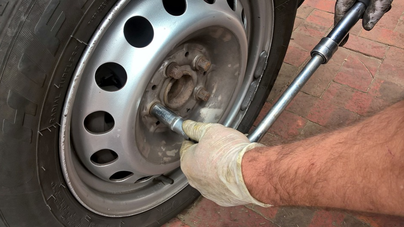Experience Accuracy with GMC Tire Service at Morris Tires
Experience Accuracy with GMC Tire Service at Morris Tires
Blog Article
Tire Service: The Effect of Climate Condition
When it concerns making certain optimum performance and safety and security when traveling, understanding the impact of weather problems on tire service is crucial. From scorching heat to icy roads, each climate component can significantly affect tire functionality and overall driving experience. By delving right into the effects of varying weather condition conditions on tires, chauffeurs can gain beneficial insights that may enhance their vehicle's efficiency and durability. In this discussion, we will certainly explore the complex connection in between weather and tire service, clarifying the relevance of weather-specific tire maintenance methods and factors to consider.
Warm and Tire Performance
When exposed to high temperatures, tires experience modifications in performance that can substantially affect automobile safety and handling. The warm produced from prolonged driving or warm weather condition problems creates the tire rubber to soften, bring about decreased walk life and enhanced wear. As the rubber becomes softer, the tire's grasp on the road decreases, affecting braking distances and total traction. In severe situations, extreme warmth can even cause tire blowouts, posturing a serious security danger to the car and its passengers.

Winter Results
Cold weather condition problems can have a considerable effect on tire performance and security. In cold weather, tires might additionally shed air stress much more rapidly, which can impact handling and gas effectiveness.
To alleviate the results of cool weather on tires, it is important to frequently examine tire pressure and inflate them to the supplier's advised levels. Using winter or all-season tires developed for cold climate conditions can also enhance grip and hold on icy or snowy roads. Correct tire upkeep, including normal assessments for wear and damage, becomes much more vital throughout cooler months to make sure ideal efficiency and safety and security.
Rainy Conditions Effect
Throughout wet conditions, tire efficiency and security can be considerably influenced by the damp roadway surface areas and lowered presence. The tread pattern of tires plays an essential role in maintaining traction on damp roads. Tires with damaged treads are a lot more susceptible to hydroplaning, where a layer of water accumulates in between the road and the tire surface area, causing loss of grip. To battle this, chauffeurs need to on a regular basis evaluate their tires for adequate step depth and take into consideration investing in tires especially created for wet problems.
Furthermore, rainy weather can likewise decrease exposure, making it testing for motorists to see the road in advance plainly (GMC Tire Service). In such problems, it is important to adjust driving rates as necessary and preserve a safe complying with range to permit sudden quits. Properly filled with air tires can additionally assist in keeping control on wet roadways by supplying far better handling and grip
Snow and Tire Safety And Security
Snow-covered roads posture unique obstacles for vehicle drivers, emphasizing the importance of correct tire option and upkeep. When driving in snowy conditions, having the best tires can make a substantial distinction in safety and performance. Winter months tires are designed with unique rubber substances and walk patterns to give far better traction on snow and my link ice compared to all-season tires. The much deeper footsteps and sipes of winter redirected here tires assist grasp the road better, reducing the risk of sliding and gliding.

It is vital to comply with manufacturer directions when utilizing and setting up tire chains to protect against damages to the tires and automobile. By selecting the best tires, preserving appropriate inflation, and taking into consideration added traction help like tire chains, chauffeurs can improve their safety and security when browsing snow-covered roadways.
Weather-Related Tire Upkeep
Weather-related tire upkeep includes a variety of methods aimed at guaranteeing ideal tire function and durability in different weather condition scenarios. One crucial aspect of weather-related tire upkeep is tire pressure regulation. Evaluating tire tread regularly and replacing tires when walk wear reaches a particular depth is crucial for preserving traction and security in damaging climate.
Final Thought
Finally, climate condition have a substantial effect on tire efficiency and safety. From heat impacting tire pressure and use to winter minimizing grip, it is vital to take into consideration the weather condition when maintaining and making use of tires. Stormy conditions can decrease hold and cause hydroplaning, while snow can boost the risk of accidents if tires are not correctly equipped. Weather-related tire upkeep is vital in ensuring optimum efficiency and security when traveling.
In this conversation, we will certainly check additional resources out the intricate relationship between weather conditions and tire service, shedding light on the importance of weather-specific tire upkeep methods and considerations.

Report this page